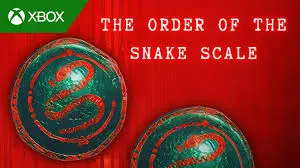The moon has shattered. If you happen to go on a witching hour hunt, and should pause to glance at the stars, what you’ll see is Luclin, in thousands of pieces, falling slowly through the sky.
Norrath has changed much over the last five hundred years, since the Gods and Goddesses ruled the fate of the world. Compared to the impact the moon’s destruction has had on the world, its appearance is one of the game’s more superficial changes. EverQuest II is an entirely new experience.
The first thing the player gets to fiddle with is the character creation screen. There are currently fifteen races to choose from – with word that the Froglocks can be “unlocked” through player quests. With all the recent MMORPG innovations that allow players to customize their characters, it is perhaps fair to expect the same from EverQuest II. The game gives you the freedom to customize your avatar’s eyes, nose, hair, chin, cheeks, and more, but the catch is that there isn’t a big difference between the minimum and the maximum selections. However, each particular race carries with it a specific aesthetic that too much customization might ruin. The hairstyle choices are especially impressive, particularly for the Elf races. This is only one small area in which the creativity of EQ II’s developers is markedly evident in the finished product.
EverQuest II doesn’t stray too far from the fantasy theme that’s dominated the genre, but it does offer some innovations to make that threateningly tired theme seem fresh. The graphics of EQ II are both detailed and rich; it’s hard to imagine what they’d look like at extreme quality, the highest available. Even at the “balanced” graphic setting (a happy medium between eye candy and peak performance), water splashes when you run through it, and weeds gently sway in the breeze. The graphic detail extends to realistic shadow effects, diverse spell and tradeskill animations, well-choreographed combat, and some of the most impressive atmospheric effects ever to appear in an MMORPG.
The game’s two main cities, Freeport and Qeynos, each contain about eighteen zones (including the newbie adventuring zones), with unique looks and feels. The smaller city zones connected to Qeynos are more distinct than those of Freeport, but the newbie fighting zones of Freeport certainly grasp attention, ranging from a city half immersed in water to a rocky desert terrain.
Additional to the graphic emotions your character can perform and the detailed scenery, a sense of underlined atmosphere and ambience is also evident through EQ II’s various sounds. The music, composed by Laura Kapman and performed by the Prague Symphony Orchestra, has an epic sweep, which transcends the often annoying or chintzy soundtracks of other games. The sounds inside Norrath help to create an immersive virtual world in surround sound. NPCs in Freeport comment on how vile you are or how nice a day it is for “evil to flourish.” Many of the quest-assigning NPCs call you over to speak with them; even the humanoid creatures have speaking parts – some in languages impossible to understand. The voice-overs sound like caricatures, but this isn’t necessarily a negative aspect amid a world built around stereotypes and ensconced in fantasy.
Questing is also not a new idea, but EverQuest II provides a quest system that is rewarding and challenging – giving items, experience and coin, without hijacking the open-ended freedom one has in an MMORPG. A quest-centric game runs the risk of playing like a linear single-player role-playing game; however, EQ II’s developers have provided quests that force the player to venture forth into strange and often inhospitable lands. The sheer number of them precludes any sense of being led by your ear throughout the game world. Even the adventuring zones aren’t designed to have distinguishable cut-off places from one mob that’s one level to the next level of mobs. The areas near the guards are for lower level characters, but you can also find yourself killing easy prey while surrounded by groups of aggressive and challenging foes.
EverQuest II’s encounter system distinguishes itself from other MMORPGs. According to the system, there are two different types of prey: solo and group. If you encounter (consider) a creature and find it to be a solo confrontation, a single player of roughly the same level could defeat it. However, if a creature is considered as a group encounter, then all you single players may want to be careful. This new system creates less certainty than traditional con systems. If a creature cons blue (easy), it doesn’t necessarily mean that it will provide an easy fight. If a creature cons white (equal), you’ll want to check its solo/group status. There is also an arrow above the potential foe’s head that indicates whether it will be more or less difficult than it initially appears.
Another innovative element is that you have a chance to create a Heroic Opportunity. If you can trigger and activate one of these, you can turn a fight to your or your group’s favor. Additions such as this might also help players to distinguish between seasoned players and those who need to hone their skills.
There can be stronger or weaker classes, just as there are experienced and inexperienced players. Whether EQ II has balance in the higher levels remains to be seen. This was one of the stated goals of the archetype system. Hopefully, the developers created classes that develop in interesting ways over time, but still retain their validity for grouping and raiding. For each of the four archetypes – the mage, fighter, priest, and scout – there are three more classes that evolve into a final subclass. There are minor differences among the classes of each archetype, but the differences that do exist are important enough to consider when you are choosing how you want to experience Norrath for the next fifty levels. Importantly, for those who appreciate role-playing games, the classes open various life-altering possibilities that come with choosing a Paladin over a Guardian or vice versa
If you’re a pacifist, then you can spend your time crafting. Theoretically, you don’t have to become an adventurer past level seven to play as a professional crafter. However, the game remains combat oriented: most of the quests require fighting of some type; you make money through questing and fighting, therefore you need to fight in order to craft. It would be tough to lead a life devoted entirely to crafting. Hopefully, more non-combat crafting quests will be added to the game over time. EverQuest II implements many of the better aspects of other games and combines them into a cohesive crafting system that requires the player’s continuous involvement. Crafting can still become monotonous, but if crafting items should inspire boredom, you can always go gather materials. One favorable aspect of crafting is that sometimes you fail so miserably that, unless you counteract the damage with a tradeskill art, you can get hit with physical damage. It’s possible to die while crafting if you aren’t paying due attention. Creating an item that’s in demand can take time and it usually requires several steps before completion. But, if you want to make money, you’ll craft. A strong player driven economy is already beginning to develop in-game.
Now, a game may have great design and construction, but if the user interface isn’t intuitive, the player’s ability to play and access the content is subsequently hindered. Thankfully, EverQuest II doesn’t suffer from this problem. Again, the developers have taken proven elements of other user interfaces and successfully incorporated them to create a non-intrusive interface that allows the player to access EQ II’s content with few problems. The windows are customizable, giving the player the freedom to set up an interface that he or she feels comfortable with. You can, of course, create your own macros. The only problem with the macro system is that there is only one line for text in each macro. The reason for this choice seems to be to avoid exploits. The limitations on macros, however, hinder players from being able to perform an action while speaking at the same time.
The launch of EverQuest II was among the most stable since the rise of MMORPG popularity. There are some bugs that annoy more than directly affect gameplay; and the lag, despite all the related rumors from beta testing, is only minor. There are group instances, but not so many as to provide disruption from the massive multi-player experience. You get the impression you’re in an open-ended world. The biggest setbacks for EverQuest II are that, so far, it’s been unable to create an online role-playing community on the role-playing servers, and the story hasn’t attempted to deviate from the rules of the fantasy genre. There is no originality or risk in EQ II’s narrative. Good. Bad. Black. White. Freeport. Qeynos. And although areas exist within each city that harbor a particular race, this form of racial segregation may not be sufficient to create the healthy racial and cultural identities that can supplement the lore and provide for a more interesting virtual community.
EverQuest II stands as one of the better MMORPG releases. Although the narrative may lack originality, the developers have implemented elements that create a challenging environment, but not one that is frustrating. EverQuest II truly feels like an open-ended world, and there is always something for the player to do. The world, for the first twenty levels, is full of quests and other varied content. This game is as addictive as a good MMORPG should be, and it’s certainly one of the most well-rounded games in recent memory. It has a slew of content; detailed and realistic graphics and sounds; plenty of creature diversity, and it’s challenging. EverQuest II provides an accessible learning curve but can be difficult to master. Challenging games are becoming an endangered species in the MMORG genre; several of the latest releases seem to cater to the lowest common denominator of the gaming community. EverQuest II reverses that trend.
President & CEO














Leave a Reply